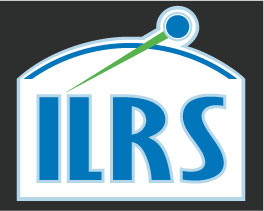Quick Links
- Network Map
- List of Stations
- Monthly Report Card
- Quarterly Report Card
- Network Status Page
- Potsdam CPF time bias service
- Procedure for estimating laser beam divergence
- Recent Station Upgrades
- Network station application form
- Revised ILRS station screening process at ILRS Operations Centers (NASA and EDC)
Station Eccentricity
The following procedure was developed by the Central Bureau in coordination with the Analysis Working Group.
Definition
In the ILRS network, there are mobile systems and permanent systems.
Mobile ILRS systems usually occupy (i.e. are referenced to) a ground monument/mark and have an associated set of non-zero eccentricities. System eccentricities are defined as the offsets (usually less than 15 meters) from the ground monument/mark to the optical reference point of the system (i.e. intersection of axes) and are measured in North, East, and Up or X, Y, and Z. Mobile systems are assigned a CDP number for the monument that it is occupying. In turn, the IERS assigns a DOMES number for the monument containing a 'M'. The 'M' indicates the presence of a physical Monument. A given monument may be occupied by more than one system or may be occupied by the same system multiple times, but never during the same time period. Therefore, for a given monument and time period, there will be a unique set of eccentricities.
Permanent systems were designed to stay in one place and usually do not occupy a ground monument/mark. In this case, the CDP number is assigned to the optical axes of intersection. In turn, the IERS assigns a DOMES number containing a 'S'. The 'S' indicates the reference to the System's optical axes. In this case, the system eccentricities are by definition ZERO. In the rare occasion that a permanent system or its intersection of axes is relocated, then a new CDP and IERS DOMES number will be assigned for each relocation.
Update Procedure
The ILRS sites are responsible for providing system eccentricity via their site and system information form (i.e. the site log). These forms are to be forwarded to the ILRS Central Bureau (CB) each time a system relocates or there is a new set of eccentricity measurements. Eccentricities are usually only accurate to 1 to 2 millimeter level. BUT to avoid computational errors in transformations from North, East and Up to X, Y and Z, eccentricities are to be reported to 0.1 millimeters.
The CB will perform the following quality assurance on all new eccentricities:
2) If the eccentricities are a updated set for a given location, then the magnitude of the changes between the current and previous set will be analyzed. If the changes are within the uncertainty of the measurement itself, then there is no 'OFFICIAL' eccentricity change and only the date of the latest measurement will be added as a comment to the eccentricity data base. This will ensure there are no subtle discontinuities induced in station position due to the management of a eccentricity measurements.
All ILRS site eccentricities will be maintained in two SINEX data bases (North, East, Up and X, Y, Z) on the CDDIS at:
https://cddis.nasa.gov/archive/slr/slrecc/ecc_xyz.snx.gz
https://cddis.nasa.gov/archive/slr/slrecc/ecc_une.snx.gz
In these data bases, each eccentricity set will have a unique CDP number and time frame. The date the file was last updated will be contained inside the file.
Related information
- Additional documentation on 20-Apr-2020 eccentricity updates
- NASA Official: Frank Lemoine
- Web Developers: 610 Web Dev
- Contact Us
- Last modified date: May 23, 2025
- Privacy Policy & Important Notices




